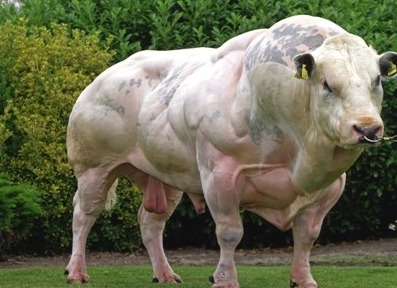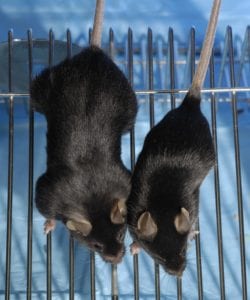L_H
#786
Thank you. I quite enjoy this cut and thrust. But I know not everyone does. So I do worry about clogging up the thread.  . I just can’t leave (what I believe to be) illogical statements unanswered when it could lead others into poor dietary decisions. I’d hate for people to start using canola oil rather than evoo just because I couldn’t be bothered to post a reply.
. I just can’t leave (what I believe to be) illogical statements unanswered when it could lead others into poor dietary decisions. I’d hate for people to start using canola oil rather than evoo just because I couldn’t be bothered to post a reply.
Maybe we could post a poll and settle things that way and move on?
4 Likes
A_User
#787
It’s not a mystery olive oil, it is extra virgin olive oil, just like I said.
extra virgin OO (Navarino, Danton Trading, Århus, Denmark)
Here’s a video on the topic, I don’t know which study Gil mentions but I’d like to see that one where canola lowers apoB more than olive oil.
1 Like
L_H
#788
It’s quite mysterious because the company has gone bust 
The mystery re the olive oil is that the composition doesn’t match what you’d typically see in evoo. For example the oleic acid mmol% is very low. Maybe why we don’t see much danish evoo.
I don’t really use youtube as scientific evidence. Is there a study they talk about that’s relevant?
1 Like
Probably best to merge the oil section in an olive oil topic. It’s going to be hard to find this subtopic in Bryan Johnson’s protocol. 
3 Likes
A_User
#790
They didn’t go bust, they were acquired by another company. They were a supplier of greek food. Navarino is a place in Greece.
The oleic acid is low, but still in normal range of EVOO, because that is a calculation of the total content of the diet.
I use canola oil because of its neutral taste. Avocado oil alters the taste a little of some things I cook. Just a personal preference not because I think canola oil is better than avacodo oil.
1 Like
L_H
#792
Yes you’re right. They were acquired (Sorry for trying a joke.) And the olive oil is evoo.
Not sure that answers the other points though:
The study you found is
Very Old, it’s from the year 2000!!
Small. Its only 18 people
…
Using an outdated methodology for estimating apo B. “Cited by (0)”
If you listen to the Tom Dayspring/ Pete Attia podcasts I linked.above, there’s a great section on the actual testing methodologies of apoB and LDL-C. The methodology has changed enormously since 2000. And part of the reason apoB is now the preferred metric is due to standardization and accuracy improvements in apob testing in the 2000s.
If you’re relying on 24 year old, small, single study which hasn’t been cited by anybody and looks at only a single parameter, then you have to ask yourself why?
Maybe confirmation bias creeping in?
1 Like
medaura
#793
Animal fats are superior for frying in the sense that they’re highly stable and not prone to oxidation — tallow won’t go rancid. Makes French fries taste amazing too. But the high heat can denature or create glycation end products in the food you’re frying. So I stay away from fried food (it helps that I tend to find its taste disgusting with the only exception of fries in the Mediterranean). I do keep tallow at hand for when things get hot in the pan though. Great taste enhancer.
1 Like
59vw
#794
I spent my career in gene therapy for muscle disease using AAV. The Folistatin gene therapy technology was actually developed to treat Duchenne muscular dystrophy. As far as I know the young boy posted above is the only human ever discovered to have a congenital myostatin gene mutation. He must be in his 30’s by now unless this is a different child than who has been classically shown, perhaps even it is the son of the one I’m aware of.
This is a long thread so these may have been posted but there are strains of cattle that have “double muscle” mutation that turned out to be a myostatin mutation. The same mutation introduced into mice cause a Schwarzenegger mouse as well. The whippet dog also is affected by mutations in this pathway. As homozygotes they are called Bully whippets and are so muscley that they can’t move very fast but the heterozygotes are fast runners and have been used in racing.
Here are some pictures of the cows and mice. I hadn’t heard that folistatin gene therapy was offered commercially. Lots of risks with AAV gene therapy that are appropriate for severe diseases like Duchenne Muscular dystrophy, spinal muscular atrophy, factor IX deficiency, but I’d be real hesitant allow it on myself for muscle augmentation. I think it shows how little Bryan knows about some of the treatments he’s undertaking.



6 Likes
What risks specifically… are you talking about the issue of random integration where its not wanted?
It seems that the technology Minicircle is using (plasmids) doesn’t integrate permanently, so I’m not sure I would classify it as true gene therapy. what are your thoughts on how they are using it. It seems they get temporary expression but it fades after a few months. Seems like its pretty low risk but also pretty low benefits.
I was working with a gene therapy researcher out of Stanford many years ago who had identified a targeted non-viral vector we were thinking could be used for similar applications as you have mentioned, muscular dystrophy, etc. initially to get approval, but then there is the broader market of sarcopenia that happens to almost everyone with age. By focusing the injections in the muscles (vs. systemic) we were thinking you could avoid the issue (in this case we were looking at the IGF-1 gene, for over expression in the muscle, a similar effect as with the myostatin inhibitors).
One of the guys I was working with had been at Avgenics. The entire gene therapy market was put on ice after the death of a patient in a clinical trial. It doesn’t seem like the delivery vectors have changed much… with AAV still the dominant vector being used.
4 Likes
Neo
#796
Thanks for all this perspective. Could you share more color on this?
Is one risk that one will likely create an immune memory for the vehicle and, even if that is not a “safety risk”, basically become vaccinated against it and that vehicle will hence not be effective for that person in the future if any other gene therapy that uses that vector (or if dosing of the same therapy is needed later)
And that there are only a limited number of vehicles?
1 Like
A_User
#797
I don’t rely on that at all, the other evidence I said stand on their own two feet.
As of now, olive oil increases LDL cholesterol in comparison with canola oil.
Other metrics except TC couldn’t be detected.
L_H
#798
You’ve looped back to the beginning. I think you need to actually read the papers linked in this thread.
Or maybe just be happy drinking canola oil in your smoothies and not worry about your longevity.
1 Like
A_User
#799
I’m happy with canola oil decreasing my LDL compared to olive oil. That will most likely decrease apoB as well. If it doesn’t, I will try olive oil or some other oil, again.
I think you need to leave the LDL and ApoB lowering to the big guns like statins, Bempedoic Acid and Ezetemibe.
Frankly olive or canola is just noise compared to the Big 3 above.
A_User
#801
It’s not hard to swap cooking oil, and if there is a benefit I will take it.
I will of course still take medications.
1 Like
L_H
#802
The systematic review of RCTs you posted suggests it wont decrease apoB. You really do seem immune to scientific data.
L_H
#803
Don’t be too quick to dismiss lifestyle interventions. As a population intervention they have poor compliance. But for anyone motivated enough to be on here, compliance shouldn’t be a problem. If you can channel your inner Bryan Johnson…
This shows a -45 mg/l impact on apo b from adding fibre.
https://www.sciencedirect.com/science/article/pii/S2161831323000054#:~:text=Using%20data%20from%2026%20studies,0.617)%20(Table%201).
High fish diet can lower apo b by 23% Effects of Therapeutic Lifestyle Change diets high and low in dietary fish-derived FAs on lipoprotein metabolism in middle-aged and elderly subjects - PubMed
Extra virgin olive oil can lower apo b by circa 7% (see thread above  )
)
Exercise … Resistance exercise decreased ApoB levels by 50 mg/dL over 3 months in 52 people with type 2 diabetes The effects of resistance training on ApoB/ApoA-I ratio, Lp(a) and inflammatory markers in patients with type 2 diabetes - PubMed
Nuts… eating 43 g of walnuts a day for 8 weeks decreased ApoB by 7 mg/dL A Walnut-Enriched Diet Reduces Lipids in Healthy Caucasian Subjects, Independent of Recommended Macronutrient Replacement and Time Point of Consumption: a Prospective, Randomized, Controlled Trial - PubMed
Less frying and more sauteeing…When 26 people consumed diets low in AGEs, their ApoB levels decreased by 25% Restriction of dietary glycotoxins reduces excessive advanced glycation end products in renal failure patients - PubMed
If those operate independently then collectively they could outgun 40mg of atorvastatin + 10mg of ezetimibe.
And they come with a host of anti-inflammatory, ldl oxidation reducing, blood pressure, blood glucose, kidney function enhancing sides.
And you can always add a statin/ezetimibe on top.
7 Likes
A_User
#805
I’m not immune to scientific data.
Just because an effect wasn’t detected does not mean there was not an effect.
If no spies were detected in an organization, does not mean there aren’t spies in it. Especially if someone’s been copying documents and things have been leaked (high correlation with LDL, lower SFA, higher PUFA).
Absence of evidence is not evidence of absence.
The reason for - I repeat - lack of statistical significance can simply be because there are few studies that measure apoB, a lack of statistical power.
Here’s from Cochrane:
A common mistake made in instances when evidence is inconclusive is the confusion of a lack of evidence of an effect (due to imprecision) with „evidence of no effect‟.2 It is wrong to claim
that inconclusive evidence (when there is a wide confidence interval that includes potentially
important benefits or harms) shows that an intervention has had „no effect‟. „Statistical
significance‟ should not be confused with the size or importance of an effect.
When results are not „statistically significant‟ it cannot be assumed that there was no impact.